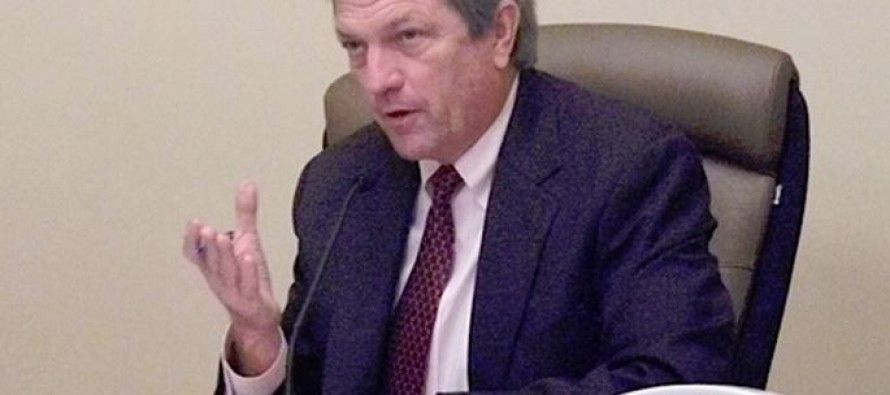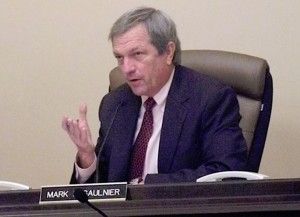Sen. DeSaulnier grills high-speed rail CEO on funding

 Editor’s Note: This is Part 2 of a series looking in depth at the latest hearing in the state Senate on California’s high-speed rail blueprint. Part 1 is here.
Editor’s Note: This is Part 2 of a series looking in depth at the latest hearing in the state Senate on California’s high-speed rail blueprint. Part 1 is here.
Skepticism took center stage as the Senate Transportation and Housing Committee held hearings on Gov. Jerry Brown’s proposal to use cap-and-trade revenues to fund the project. The committee reviewed the California High-Speed Rail Authority’s 2014 Draft Business Plan and evaluated the project’s potential for success.
Committee Chairman Mark DeSaulnier, D-Walnut Creek, grilled CHSRA CEO Jeff Morales about getting votes in the Legislature for the cap-and-trade proposal. DeSaulnier was the only senator at the hearings, a video of which is here.
Cap-and-trade revenues come from quarterly auctions of greenhouse gas emission credits by the California Air Resources Board. The program operates under the authority of AB32, the Global Warming Solutions Act of 2006.
Morales said high-speed rail meets the requirements of the cap-and-trade program, but referred the senator to the California Air Resources Board. He added that high-speed rail was part of CARB’s scoping plan before the 2008 vote on Proposition 1A, by which voters authorized the high-speed rail project.
DeSaulnier asked what would happen if the Legislature didn’t approve the cap-and-trade dollars for the train. Morales replied he wanted first to talk about what approval would look like.
He said cap-and-trade dollars would keep the program moving. But that if they don’t get the funding, they would have to look elsewhere for more money. “We would not have the same kind of certainty that we would have with the governor’s proposal” on using the cap-and-trade funds, he said.
DeSaulnier told Morales there will be cap-and-trade fund discussions as the budget debate heats up. But DeSaulnier said the Brown administration faces a huge challenge to get cap-and-trade fund votes. DeSaulnier even said he most likely would be voting No.
DeSaulnier warned Morales that they need to have an honest discussion about the risk about authorizing $250 million of cap-and-trade money that DeSaulnier believes would be better spent in a more targeted way, as proposed by the Legislative Analyst.
Financing
Morales confirmed there aren’t any additional grants on the immediate horizon, as the government moved away from grants toward bond financing.
As to private investment, he said there’s strong interest, but nothing certain. “They’re not there yet,” he said of private investors.
Essentially that means no private investor has jumped in and said, “Let us buy the rights to run this train system for you.” No private investment is predicted to be in the picture until the train is built and carries proven ridership.
Business plan
Morales testified that the 2014 Draft Business Plan builds on the 2012 Business Plan.
He said the CHSRA is doing better with the engagement of stakeholders, meaning anyone or any entity affected by the project, such as cities, counties, railroads and residents.
He admitted the CHSRA hasn’t solved all the problems. But he believes most stakeholders would acknowledge the CHSRA is working with them fairly and openly.
In particular, he testified that the CHSRA’s governance has shown a vast improvement. In 2012, they had two-dozen people. Now they have 120 people on board and will fill all remaining slots by June. “We have government people making government decisions,” Morales said.
He said he appreciated many of the comments that were in the Background Paper prepared by the Senate Transportation and Housing Committee. But he took issue with one statement that judged the project a failure. Speaking for the folks working at the CHSRA, he said he didn’t think it was fair to judge the project because they hadn’t laid any track yet and these projects take time.
Other projects
DeSaulnier revealed that he spoke to the staff of famed mega-project expert Bent Flyvbjerg during the Bay Bridge hearings. Flyvbjerg’s staff reported two types of projects were particularly vulnerable to very high cost overruns: tunnels and rail projects, which run as much as 4-1/2 times estimates. High-Speed Rail is by definition a rail project and has tunnels including the treacherous Tehachapi Mountain range.
But, DeSaulnier quickly added, Caldecott Tunnel was done on time and on budget, so those statistics didn’t always hold true.
DeSaulnier said the 2014 Draft Business plan is more robust than previous business plans, but still leaves a lot of assumptions. He pointed out the plan wouldn’t be adequate even to get a small-business loan.
DeSaulnier also brought up the ongoing lawsuits against the high-speed rail project, and asked if Morales had confidence that the project will move forward past the lawsuits. The case now is before the Third Circuit Court of Appeal.
“We’re moving forward in good faith in the law and in compliance with it,” Morales said.
Jobs
With California’s unemployment rate stuck at 8 percent – and even higher in the area where the first rail construction could begin – DeSaulnier asked about jobs creation.
Morales said almost 6,700 people now are working on the project. “The greatest percentage of jobs will come during heavy construction,” he added.
Tutor Perini Corp., the main construction firm, has contracts with 27 small businesses, most in the Central Valley, with others throughout California. Morales said the jobs are providing economic benefits in those troubled areas and will bring “unprecedented investment in the Central Valley,” as well as help diversify the area’s economy.
Related Articles
Certainty Shmertainty
Just to recap a bit for those following at home: the state is currently running a $20 billion or so
Brown offers infrastructure compromise plan
Shifting gears from a public hands-off approach, Brown gave California lawmakers his own take on how to reach an agreement
Will High Speed Rail Ever Get on Track?
AUG. 19, 2010 Last month I had the privilege of riding the best train in California. Indeed, it’s perhaps the



